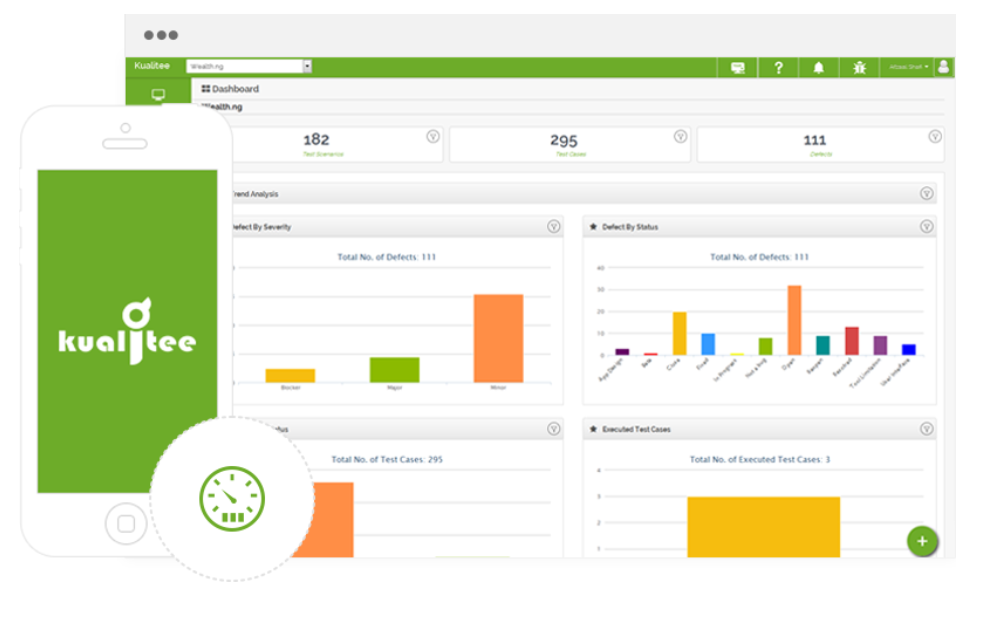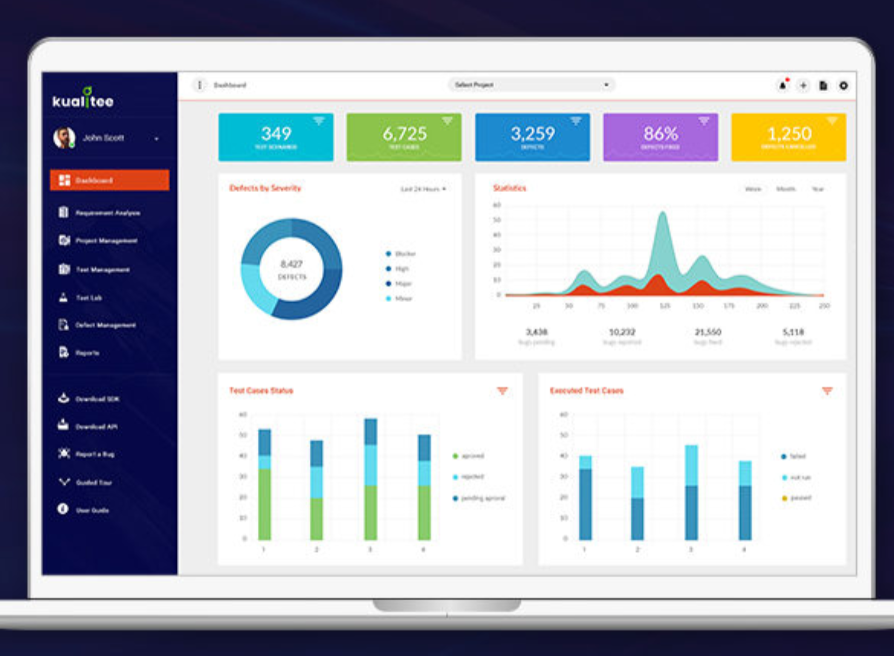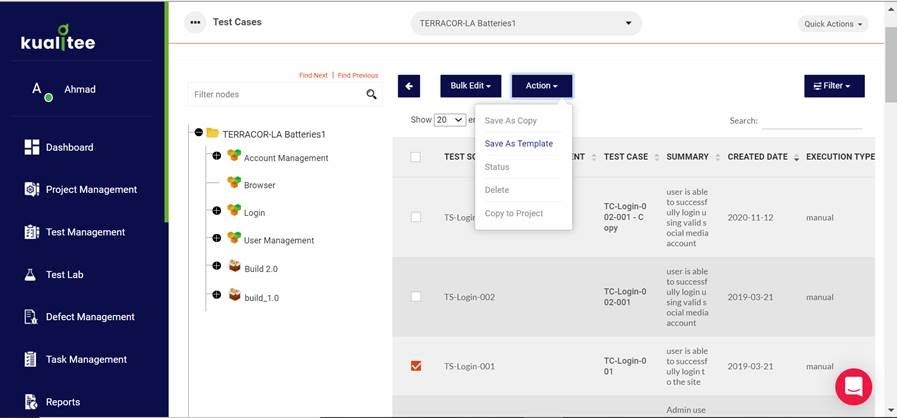Foreword
Kualitee is a test management tool that helps software teams to plan, organize and execute software tests and maintain a reliable repository. It also empowers QA leads and managers to stay updated on the live progress of projects and generate reports. The tool fits into the software development life cycle and therefore has built-in integrations with software development tools, defect management, and automation testing tools. For teams who don’t want to use a separate defect management tool, it has a built-in defect management module.
2020 was a big year for Kualitee’s development and this is a story told by its creators about its journey in that year.
First and foremost, the user experience
It took 8 months of hard work for the team to re-imagine the whole UI experience of the application. The result was a completely modernized look and feel of the application, while also updating the underlying front-end technology.
Other feature developments went on the back burner while we were working on the UI so it was quite a trade-off. However, just within a few weeks of its launch, we came to realize that the investment had paid off as we started hearing good things from customers about the friendly and fresh interface.
If you don’t take my word for it, have a look at the before and after application below.
Before:
After:
That was April 2020. Since it was such a huge change, the following month we had our hands full with fixes and stabilizing the new version.
Sitting in the middle of the software development cycle
Software testing is a part of the software development lifecycle so a test management tools sits in that bigger activity. For a test management application, that means it should easily integrate with other tools in the larger software process.
As soon as the new version of Kualitee was released in April, we went cracking on making new integrations for it. App development platforms such as GitLab are now integrated, and so are task management tools such as Asana, automation test management tools such as Selenium, and issue tracking tools such as Jira and Redmine.
Don’t reinvent the test case
Re-usability of test cases is arguably the single most important reason for teams to use test management teams. This means that once a test case is made, instead of making a new one again in another project, teams should be able to re-use that test case for another project or test cycle.
In 2020 we made copying a test case across projects much easier. Before this enhancement, users had to export a test case from one project and then go into another project and import it. Now they just right click and add the required test cases to any other project.
So now if there is a new project with similar test case requirements or a new team member who needs to pick test cases, it has become easier to do.
Ability to see through walls
QA leads love to have the superpower of getting insights from the testing activity and instantly reporting them. We wanted to grant that wish while using Kualitee. So as part of that, we’ve improved our dashboards and made them instantly exportable.
The already time-pressed QA team leaders can now save some of their time by not having to make cumbersome reports and just exporting the readymade Kualitee dashboard by click of a button and emailing with the team. More power to the QA leads.
One size doesn’t fit all
After customers have spent some time on Kualitee, they like to start customizing their experience. This is especially typical of large enterprise customers. While there were customizability options in the tool, in 2020 we worked to further enhance it.
Users can now filter defects according to their custom fields. For example, users want to filter out only those defects that were identified during automation testing, they can make a custom field for automation/ manual testing and then filter their defects based on that.
When less is more
Every session for our users on Kualitee every day starts with a sign-in. We made it easier for users to sign-in through Google Sign-in. Users with a Google account can sign-up and sign-in with fewer clicks using their Google credentials.
For enterprises, have included Single Sign-up SSO. It benefits enterprises who use active directory or SAML service to manage user access.
From the horse’s mouth
We can’t assume on our own as to what customers are feeling about their experience of Kualitee. To hear directly from the customer, we have embedded a Net Promoter Score (NPS) in the app. Customers can directly tell how happy (or lack thereof) the customer is feeling about Kualitee and what we should do to improve that.
This gives the customer an easy way to voice their opinions and it gives us the direct route to hearing from the customer. We are going to use these suggestions to guide our product roadmap.
The beginning
While we feel satisfied to have worked hard last year to make Kualitee a better experience for users, for 2021 we aspire to make Kualitee even better. We look to get closer to our customers through customer interviews and surveys while deepening the core test management functionalities of re-usability, deeper insights for team leads, and many more integrations.





























